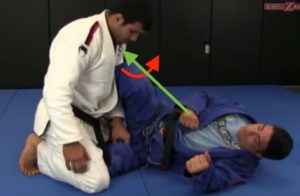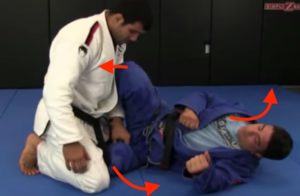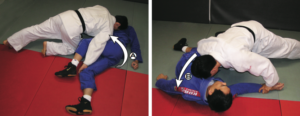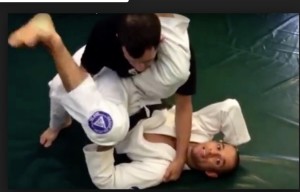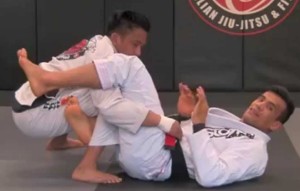Please take a look at my post ‘Open guard retention principles‘ for more on open guard retention.
See http://www.grapplearts.com/the-de-la-riva-guard/ for a brief introduction to De La Riva guard.
Your first stop for learning De La Riva guard retention should be this set of videos from De La Riva black belt David Morcegao:
Since some people learn better from reading than from watching videos, let’s take a look at some common approaches to passing De La Riva guard, and how to stop them.
Turning the hooked knee out
By taking the leg that the De La Riva hook is on and driving it’s knee forward and outward, the top person can loosen or pop the hook out.
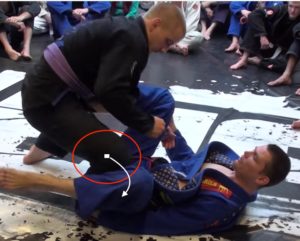
To counter this, the bottom person wants to straighten that knee by pushing on the hip with the other (non De La Riva) leg to make the top person step back, then re-hooks the De La Riva.
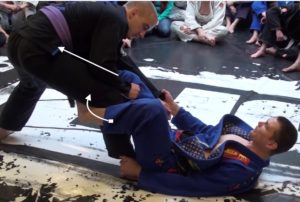
Pushing the De La Riva hook down
See ‘BJJ Scout: Leandro Lo’s DLR Counters’
https://www.youtube.com/watch?v=wbkKiWIHZvg for more on the benefits of pushing the De La Riva hook down.
In this case, I would do the same as above, but switch grips with the right hand to pull off the hand that’s pushing your hook down:
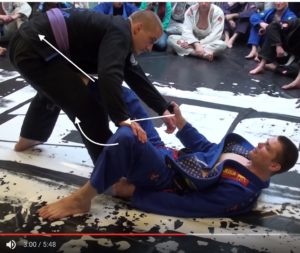
Stuffing your free leg down
If messing with the DLR leg isn’t working, often the top person will try to stuff down the free leg and step over it, into what’s commonly known as the headquarters position [I know, the picture isn’t exactly HQ position].
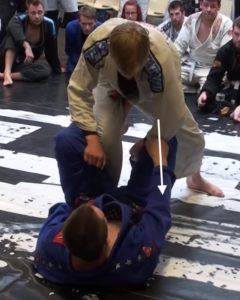
Pushing the free leg down is a prerequisite for many popular DLR passes, such as the knee cut, X-pass, and side smash pass.
The counter here is to move the foot that’s being stuffed down to reinforce itself by crossing with the DLR hook in a sort of half guard.
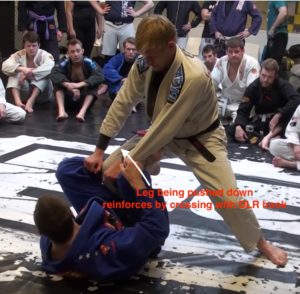
From here, we can off balance the top person forwards by pulling/lifting with the legs and pushing their hand in: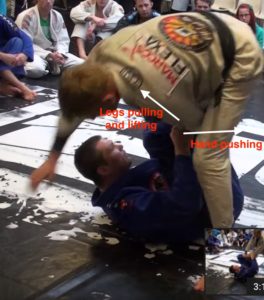
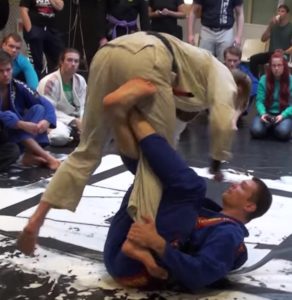
The off balancing may end up in a sweep, or simple re-establishing DLR guard. When he’s off balance, he can’t stuff the free leg effectively, so it can be extracted and put back on the hip.
Defending the leg drag
TODO add link to leg drag page when it’s available.
Backstep / kneebar
The backstep to kneebar or reverse half guard have long been a classic DLR counter.
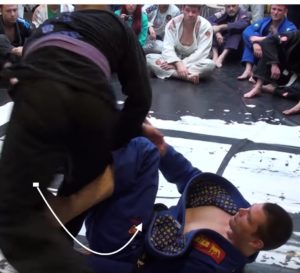
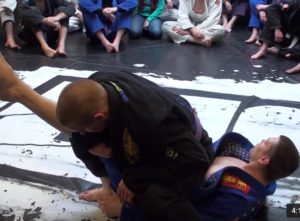
A good counter is to turn the DLR hooking knee inwards, so when the top person backsteps, they end up sitting on the shin, rather than on the bottom person’s abdomen. This leads to a sweep.
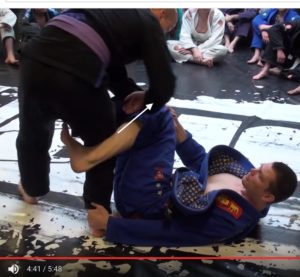
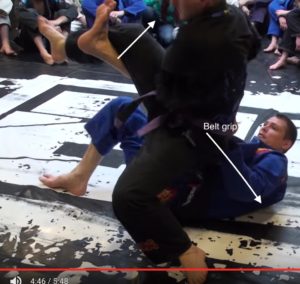
Defending against the side smash pass
Here are 2 clips from Ostap Manastyrski on stopping the side smash pass.
See also this great video by Lachlan Giles ‘Recovering De La Riva from Headquarters position’
Related:
